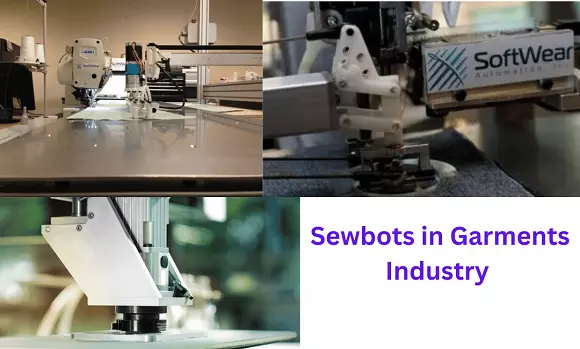In the world of garment manufacturing, technology has always played a vital role in driving innovation and efficiency. One groundbreaking development that has gained significant attention is the emergence of sewbots. Sewbots are robotic sewing systems that automate the garment manufacturing process, promising to revolutionize the industry by streamlining production, increasing speed, and reducing costs. In this blog, we will explore the future of garment manufacturing using sewbots and the transformative impact they will have on the industry. Here we go Sewbots in the Garments Industry: Future Manufacturing System in below.

What Changes Sewbots Can Do in the Garments Industry in the Future
- Enhanced Efficiency and Speed
- Flexibility and Customization
- Improved Working Conditions
- Job Creation and Upskilling
Enhanced Efficiency and Speed
Sewbots represent a paradigm shift in garment manufacturing, replacing manual labor with automated systems. By automating the sewing process, these advanced machines can significantly enhance efficiency and speed up production. Unlike human workers who may be limited by fatigue and repetitive tasks, sewbots can work tirelessly around the clock, consistently delivering high-quality garments.
With their precise stitching capabilities, sewbots eliminate human errors and inconsistencies, resulting in superior product quality. This not only reduces the need for manual inspections and reworks but also ensures consistent output throughout the manufacturing process. The enhanced efficiency and speed provided by sewbots enable manufacturers to meet the ever-increasing demands of the fashion industry and reduce lead times, resulting in faster delivery to customers.
Flexibility and Customization
In addition to speed and efficiency, sewbots also offer a remarkable level of flexibility and customization. Traditionally, the setup and retooling of sewing machines for different garment styles and sizes could be time-consuming and costly. However, sewbots are designed to adapt quickly to different patterns and specifications, allowing for rapid changes in production.
The ability to customize garments efficiently opens up new opportunities for on-demand manufacturing and personalized fashion. Sewbots can easily accommodate individualized designs and sizes, enabling manufacturers to cater to the growing demand for unique, made-to-order garments. This customization potential not only satisfies customer preferences but also reduces overproduction and waste, aligning with sustainable manufacturing practices.
Improved Working Conditions
One significant advantage of sewbots is their potential to improve working conditions within the garment manufacturing industry. Manual sewing tasks often involve repetitive motions that can lead to physical strain and long-term health issues for workers. By automating these tasks, sewbots can help alleviate the physical burden on human laborers and minimize the risk of work-related injuries.
Additionally, sewbots can eliminate some of the challenges associated with labor-intensive production, such as long working hours and the need for large workforces. While there will still be a need for human oversight and maintenance of sewbots, the shift towards automation can result in a more balanced and sustainable work environment for industry professionals.
Job Creation and Upskilling
While the adoption of sewbots may raise concerns about job loss in the garment manufacturing sector, it is crucial to recognize that this technology can also create new employment opportunities and drive the need for upskilling. As sewbots take over repetitive and monotonous sewing tasks, human workers can focus on higher-value activities that require creativity, problem-solving, and technical expertise.
Moreover, the implementation of sewbots necessitates skilled technicians who can operate, maintain, and program these advanced machines. This transition presents an opportunity for the workforce to acquire new skills and adapt to the changing needs of the industry. By investing in training programs and upskilling initiatives, the future of garment manufacturing can embrace a hybrid workforce that combines the efficiency of sewbots with the expertise and ingenuity of human workers.
Conclusion
Sewbots are set to revolutionize the garment manufacturing industry, offering enhanced efficiency, speed, flexibility, and customization. While the widespread adoption of this technology may reshape the industry and redefine job roles, it also presents an opportunity for improved working conditions, reduced waste, and increased productivity. As the future unfolds, garment manufacturers will need to embrace the potential of.
